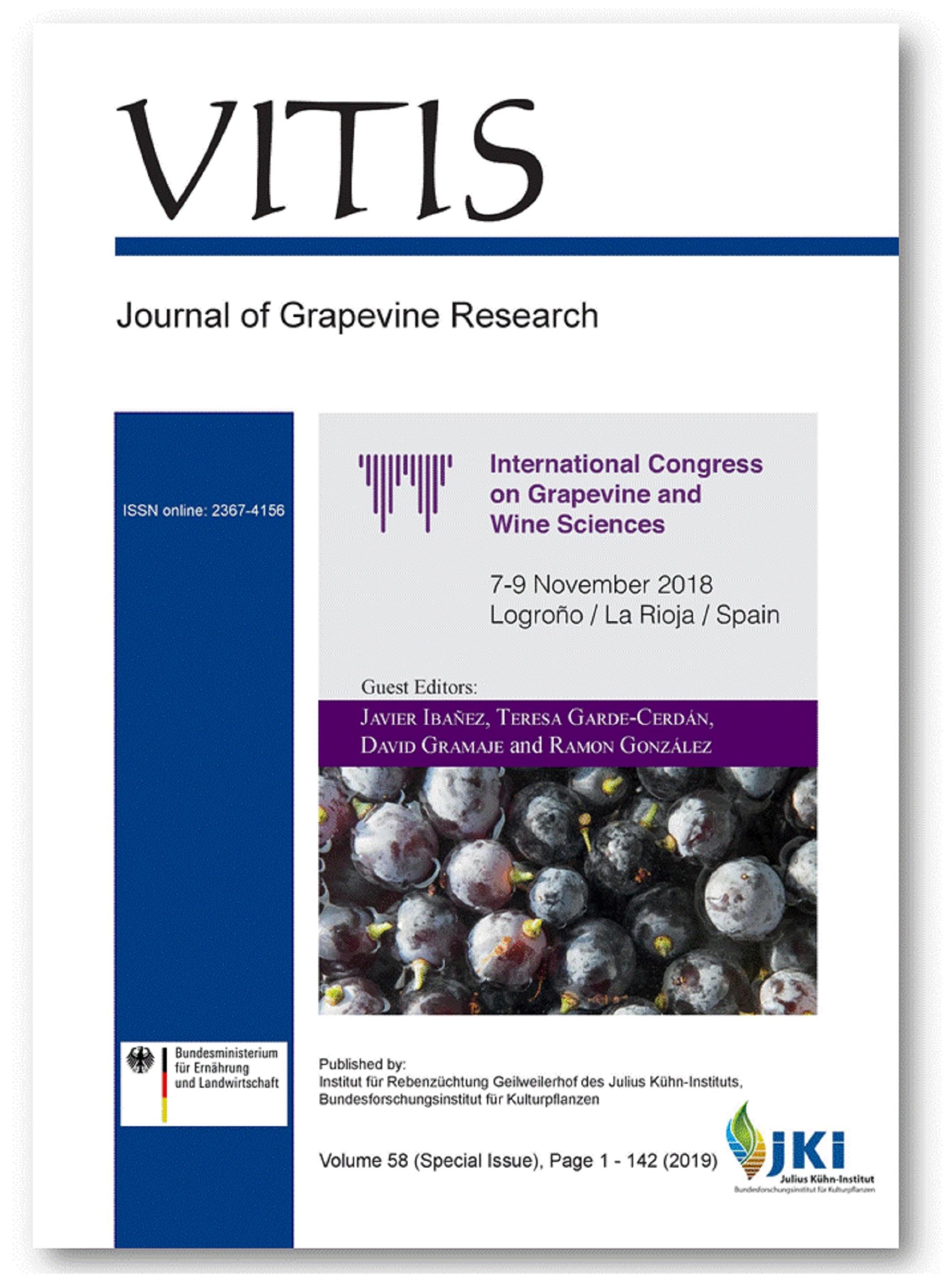Ultrasound-assisted extraction of anthocyanins and total phenolic compounds in Vitis vinifera L. 'Tempranillo' winemaking lees
DOI:
https://doi.org/10.5073/vitis.2019.58.special-issue.39-47Keywords:
anthocyanins; winemaking lees; phenolic compounds; ultrasound-assisted extraction.Abstract
Winemaking lees (WL) are the less exploited by-products from the winemaking industry. This by-product is generated after the fermentation of grape must and its composition is variable, although it is mainly made up of lysed yeasts, tartaric acid, colloids, polyphenols and ashes. Of all the compounds that can be found in lees, polyphenols exhibit particularly powerful bioactive properties and their extraction for their reuse in different matrices could be a matter of particular interest.
Ultrasound-assisted extraction (UAE) has been used to extract both total anthocyanins (TA) and total phenolic compounds (TPC) from lees from Vitis vinifera L. 'Tempranillo' vinification. The optimization of six extraction variables (% methanol, pH, temperature, amplitude, cycle and ratio solvent:mass) was performed using a Box-Behnken design (BBD) where TA and TPC were considered independent variables. The UAE method that has been developed in this research could be a new rapid and efficient method to extract TPC and, coupled to chromatographic methodologies, identify up to fourteen different anthocyanins from WL. The objective of this study is to determine WL polyphenolic content and its potential for further uses in other procedures aiming to create value from vinification waste.
Downloads
Published
Issue
Section
License
The content of VITIS is published under a Creative Commons Attribution 4.0 license. Any user is free to share and adapt (remix, transform, build upon) the content as long as the original publication is attributed (authors, title, year, journal, issue, pages) and any changes to the original are clearly labeled. We do not prohibit or charge a fee for reuse of published content. The use of general descriptive names, trade names, trademarks, and so forth in any publication herein, even if not specifically indicated, does not imply that these names are not protected by the relevant laws and regulations. The submitting author agrees to these terms on behalf of all co-authors when submitting a manuscript. Please be aware that this license cannot be revoked. All authors retain the copyright on their work and are able to enter into separate, additional contractual arrangements.



